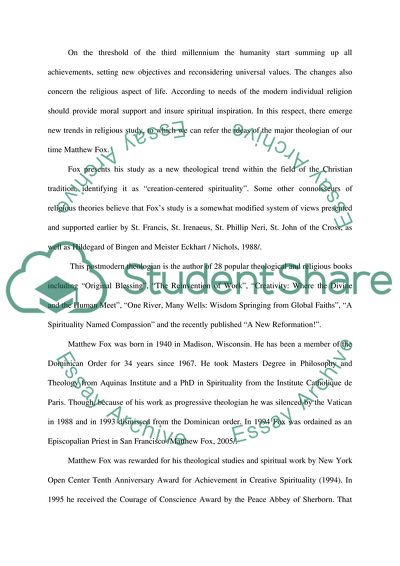Cite this document
(Major Theologian Matthew Fox Term Paper Example | Topics and Well Written Essays - 4000 words, n.d.)
Major Theologian Matthew Fox Term Paper Example | Topics and Well Written Essays - 4000 words. https://studentshare.org/religion-and-theology/1703501-major-theologian-matthew-fox
Major Theologian Matthew Fox Term Paper Example | Topics and Well Written Essays - 4000 words. https://studentshare.org/religion-and-theology/1703501-major-theologian-matthew-fox
(Major Theologian Matthew Fox Term Paper Example | Topics and Well Written Essays - 4000 Words)
Major Theologian Matthew Fox Term Paper Example | Topics and Well Written Essays - 4000 Words. https://studentshare.org/religion-and-theology/1703501-major-theologian-matthew-fox.
Major Theologian Matthew Fox Term Paper Example | Topics and Well Written Essays - 4000 Words. https://studentshare.org/religion-and-theology/1703501-major-theologian-matthew-fox.
“Major Theologian Matthew Fox Term Paper Example | Topics and Well Written Essays - 4000 Words”. https://studentshare.org/religion-and-theology/1703501-major-theologian-matthew-fox.


